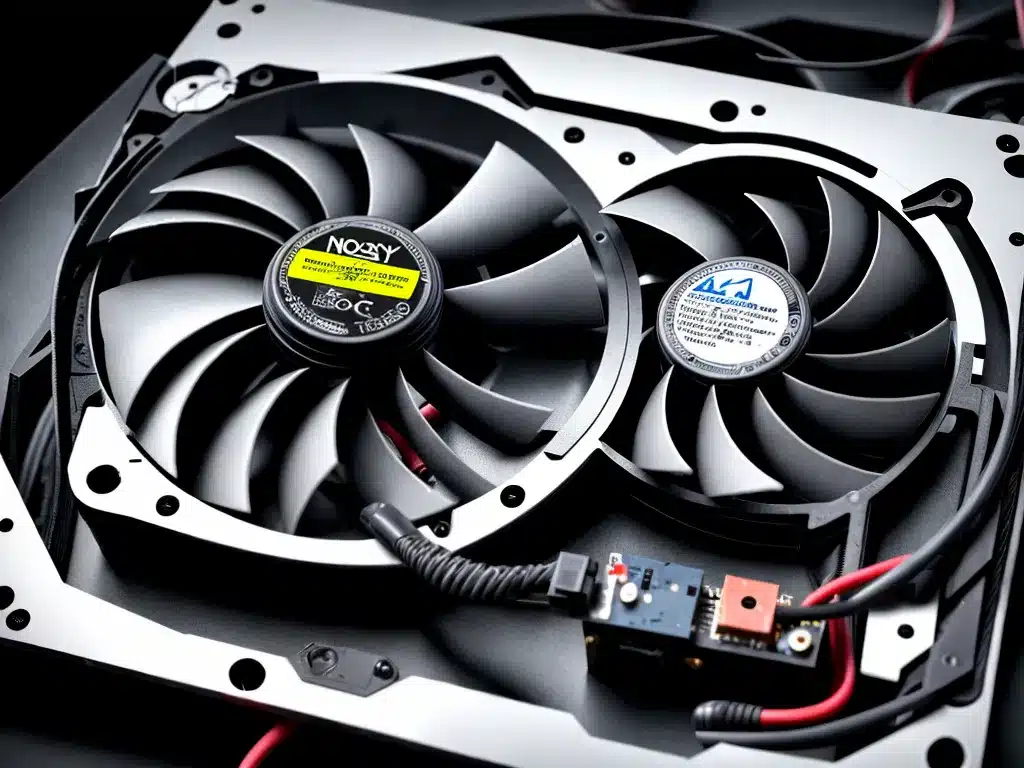
Introduction
A noisy computer case fan can be very annoying. As your faithful desktop PC ages, the fans may begin to make grinding, buzzing, or rattling noises that can distract you from your work or play. However, fixing a noisy case fan is usually a pretty straightforward process that only requires a few tools and some careful troubleshooting. In this article, I will walk through the step-by-step process I use to diagnose and repair noisy computer case fans.
Step 1: Locate the Noisy Fan
The first step is to identify which specific fan inside your computer case is making the noise. I like to do this by manually stopping each fan with my finger to see if the noise goes away.
Another method is to use a piece of paper or cardboard as a stethoscope. Place one end next to the fan and put your ear to the other end. Move it along the case until the noise sounds loudest.
Once you’ve identified the culprit, it’s time to move on to potential fixes.
Step 2: Clean the Fan
Many times, computer case fan noises are caused by a buildup of dust and debris inside the fan housing. Here’s how I clean a noisy fan:
-
Use a can of compressed air to blow out any dust from the fan blades and housing. Hold the fan still while spraying.
-
If compressed air isn’t enough, use a small paintbrush to dislodge caked-on dirt.
-
Wipe down the fan housing with a dry microfiber cloth once finished.
Cleaning the fan may eliminate any obstructions that were causing contact with the blades. After reassembling the fan, listen again to see if the noise is reduced or gone.
Step 3: Lubricate Fan Bearings
If cleaning did not fix the issue, the next thing to check is the fan’s bearings. Case fan bearings can become dried out or worn over time.
Here’s how I lubricate fan bearings:
-
Add 1-2 drops of sewing machine oil or bearing oil to the bearing shaft on each end of the fan.
-
Manually spin the fan to distribute the oil evenly.
-
Let it sit upright for 15 minutes to fully penetrate.
Lubricating dried out bearings will often eliminate grinding or squealing type noises. Just be careful not to use too much oil to avoid leakage.
Step 4: ReplaceFan Bearings
If lubricating the fan bearings did not solve the problem, the bearings are likely worn out and need to be replaced. Replacement fan bearings can be found quite cheaply online.
Here is the bearing replacement process:
-
Look up the specifications of your fan to find the right bearing size.
-
Use a small Philips head screwdriver to detach the fan blades from the housing.
-
Press the old bearings out and carefully push the new ones in.
-
Reassemble the fan and listen for noise reduction.
Replacing the bearings should eliminate any noises from worn out bearings scraping or vibrating. Just take care not to damage any small components.
Step 5: Replace Fan Entirely
If you’ve cleaned, lubricated, and replaced the fan’s bearings to no avail, then it’s likely time for a new fan. Replacing the fan itself will generally fix any stubborn noises.
Follow these tips when replacing a computer case fan:
-
Match the size, power connector, and airflow specifications (CFM/dBA) of the original fan.
-
Note which direction the old fan was mounted to maintain proper airflow.
-
Make sure the mounting holes line up with the case.
-
Check that the fan plugs into the motherboard fan header properly.
Installing a brand new fan is the surefire way to resolve even the most stubborn fan noises. Just be absolutely certain of compatibility before removal.
Conclusion
Fixing a noisy computer case fan is usually a pretty simple process if you follow some basic troubleshooting steps. Start by cleaning the fan, then lubricate the bearings. If the noise persists, replace the bearings or install a brand new fan. With a little time and elbow grease, you can eliminate those annoying fan noises and get back to enjoying your computer in peace and quiet. Let me know if you have any other tips for diagnosing and fixing noisy PC case fans!












